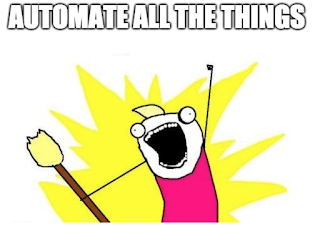What were they thinking
As of late I have been spending a lot of time working on a “legacy” system. The term legacy means different things for different groups, in the circle I’m working with these days it means a system that is no longer being actively developed. As has been stated by mean, software isn’t “dead” it’s “done”. The catalyst for the work I’m doing is security requirements that need to be applied. While applying the updated security polices I’ve also been tasked with migrating the system from our data center to our cloud data center. As I move through the system I’m confronted with implementations that looking at now seem crazy; however, it’s these situations where it is important to apply two mindsets. One is giving others the benefit of the doubt. In a case like this, those that were working on this system used, for the time, the best options the technology stack could offer. For example, the extensive use of WCF seems silly now; however, at the time it was a recommended approach to hooki...











